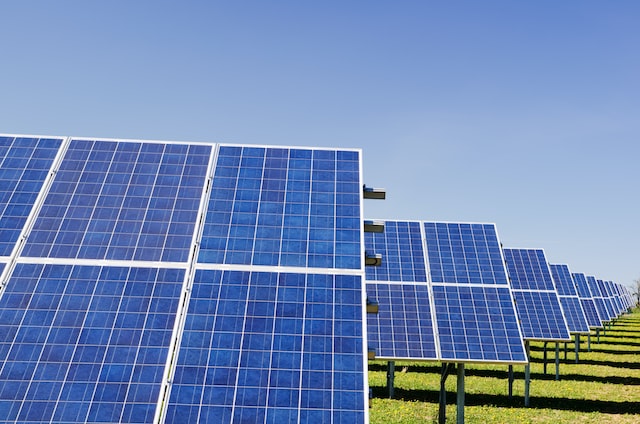Investing in a community solar garden project can provide you with many benefits. For instance, you can reduce your carbon footprint while helping power your local community.
Hosting a Community Solar Project
Hosting a community solar project provides an attractive source of income and lower-cost renewable energy to a local community. However, there are several factors to consider before you sign up.
A property owner or a nonprofit organization hosts Community Solar projects. These projects can be hosted on land or commercial rooftops.
Before you host a community solar project, make sure you clearly understand the legal issues associated with your project. This includes the potential for federal securities laws to apply. Also, ensure that your project meets consumer protection guidelines.
The National Community Solar Partnership convenes stakeholders to catalyze the deployment of renewable energy in underserved communities. It is an initiative of the Department of Energy (DOE) Solar Energy Technologies Office.
To date, Community Solar projects have been successful, providing clean, renewable energy to a growing number of residents. In addition to the monetary savings, they offer other benefits to the community, such as healthier neighborhoods, pollinator habitats, and more.
Whether your project is hosted by a property owner, nonprofit organization, or utility, you should review your project’s legal obligations and warranties. It would help if you also understood your obligations during a disaster.
Typically, you will need to find a lender to finance your community solar garden. Some sponsors can secure financing for you if you don’t have the capital.
Reduce Your Carbon Footprint
Community solar programs have become an increasingly popular way to reduce your carbon footprint. They offer a variety of benefits. For example, they might help you save money on your electricity bills. Depending on your energy plan, you may also find that you’re getting credit for the energy your system produces.
There are several ways to reduce your carbon footprint, but the most simple may be changing your travel habits. Choosing public transportation or a bike can make a big difference. You can also buy products with a lower carbon footprint.
Eating locally is a great way to support your community and the local economy while reducing your carbon footprint. Food grown locally can help protect the environment by preserving land. Purchasing local fruits and vegetables also enables you to reduce carbon emissions since most greenhouse gases are produced during food production.
Another smart way to cut back on carbon emissions is to shop at a local farmers market. Choose produce that is in season and grown nearby.
Another tremendous eco-friendly idea is to reduce your meat consumption. Meats like beef and lamb contribute to greenhouse gas emissions. Try substituting meats like chicken and pork with plant-based alternatives.
Getting an energy audit will show you how well your home is insulated and energy efficient. These small changes can reduce your energy use by hundreds of pounds per year.
Clean, Renewable Electricity
If you want to reduce energy costs, consider investing in a community solar garden. This project can help you to save money and avoid emissions equivalent to 1,000 cars.
In addition to reducing your environmental impact, a community solar project can feed surplus clean energy into the local power grid. By increasing the overall consumption of green energy, these projects help to mitigate climate change.
A community solar garden can be an ideal solution for those who have limited space for solar panels. It’s also a good choice for people who want to avoid the cost and hassle of installing an independent solar array.
Community Solar Gardens are centrally located PV systems that provide power to participating subscribers. Developers seek subscriptions from consumers and then raise funding for the construction and operation of these gardens.
These projects are gaining popularity in the U.S. as they offer substantial savings for members. Not all community solar projects are created equal. Some states have rules favoring utility-owned community solar, while others have favored third-party developers. Some legal issues may have a significant impact on a solar garden project.
Choosing the suitable model for your project will depend on the location of the array, the annual savings, and the benefits and risks associated with each. Knowing how a solar garden is structured will allow companies to structure transactions and take advantage of tax incentives.
Nonprofit “Buy a Brick” Model.
The Nonprofit “Buy a Brick” model allows donors to participate in a shared renewable energy installation. This type of solar project is an efficient, cost-effective way to install renewable energy on a community scale.
Several states have a variety of different nonprofit solar models. These projects can be either a Special Purpose Entity (SPE) or a Shared Renewables system. However, each is designed to help people get involved with a community solar installation.
An SPE is a private organization that can enter a business venture to help develop a solar community project. These companies benefit from tax credits and incentives, which make investing in a solar community project more accessible.
The Shared Renewables model is another “buy a brick” model. In this case, you buy a share of a charitable nonprofit corporation’s renewable energy installation. You can also contribute to a community solar garden without investing much money.
Consider investing in a shared solar farm for many reasons. First, your company will be able to become a part of a more significant movement to protect the environment and promote long-term job growth. It will also be able to demonstrate its social responsibility to the public.
Another reason you should look into this kind of solar installation is that it can raise regulatory questions. Some state regulators need help with the apportionment of the costs of the project and the rate of return.




